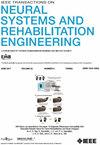Inertial-Based Dual-Task Gait Normalcy Index at Turns: A Potential Novel Gait Biomarker for Early-Stage Parkinson’s Disease
IF 4.8
2区 医学
Q2 ENGINEERING, BIOMEDICAL
IEEE Transactions on Neural Systems and Rehabilitation Engineering
Pub Date : 2025-01-29
DOI:10.1109/TNSRE.2025.3535696
引用次数: 0
Abstract
As one of the main motor indicators of Parkinson’s disease (PD), postural instability and gait disorder (PIGD) might manifest in various but subtle symptoms at early stage resulting in relatively high misdiagnosis rate. Quantitative gait assessment under dual task or complex motor task (i.e., turning) may contribute to better understanding of PIGD and provide a better diagnostic indicator of early-stage PD. However, few studies have explored gait deviation evaluation algorithms under a complex dual task that reflect disease specificity. In this work, we proposed a novel inertial-based gait normalcy index (GNI) based on inertial-based quantitative gait assessment model to characterize the overall gait performance during both straight walking and turning with or without serial-3 subtraction task. The factor of group and task on the GNI variable was investigated and the feasibility of GNI to improve early-stage PD diagnostic performance was validated. The experimental results showed that the task paradigm is a significant factor on GNI performance where the dual-task GNI at turn had the best discriminating ability between early PD and HC (AUC =0.992) and was significantly correlated with UPDRS III (r =0.81), MMSE(r =0.57) and Mini-BEST(r =0.65). We also observed that the turning-based GNI has larger effect size compared to clinical scales, demonstrating that GNI during turning can reflect the changes of functional mobility in rehabilitation for the early PD. Our work offers an innovative and potential gait biomarker for early-stage PD diagnostics and provides a new perspective into gait performance of complex dual task and its application in early PD.求助全文
约1分钟内获得全文
求助全文
来源期刊
CiteScore
8.60
自引率
8.20%
发文量
479
审稿时长
6-12 weeks
期刊介绍:
Rehabilitative and neural aspects of biomedical engineering, including functional electrical stimulation, acoustic dynamics, human performance measurement and analysis, nerve stimulation, electromyography, motor control and stimulation; and hardware and software applications for rehabilitation engineering and assistive devices.

 求助内容:
求助内容: 应助结果提醒方式:
应助结果提醒方式:


